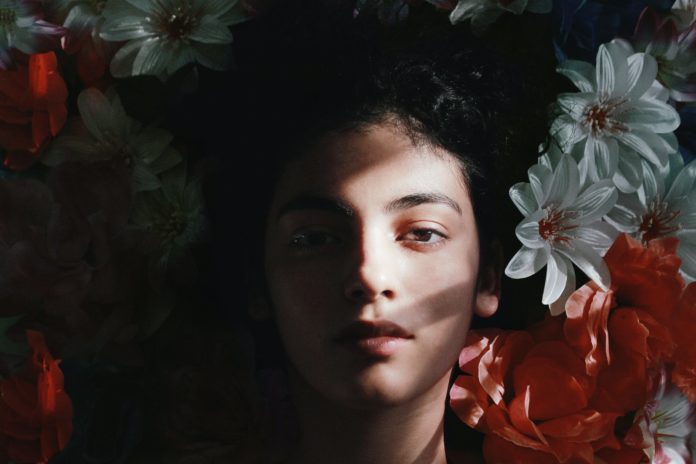Flowers are nature’s beautiful treasures and small wonders. Men were always fascinated by them, and flowers are still a strong inspiration for artists, brands and people in their daily lives. Flowers are forever a robust and inspiring beauty. Here is a small parenthesis of beauty and magnificence while the world is going crazy.
What is a flower?
A flower, sometimes known as a bloom or blossom, is the reproductive structure found in flowering plants(plants of the division Angiospermae). The biological function of a flower is to facilitate reproduction, usually by providing a mechanism for the union of sperm with eggs. Flowers may reduce outcrossing (fusion of sperm and eggs from different individuals in a population) resulting from cross-pollination or allow selfing (fusion of sperm and egg from the same flower) when self-pollination occurs.
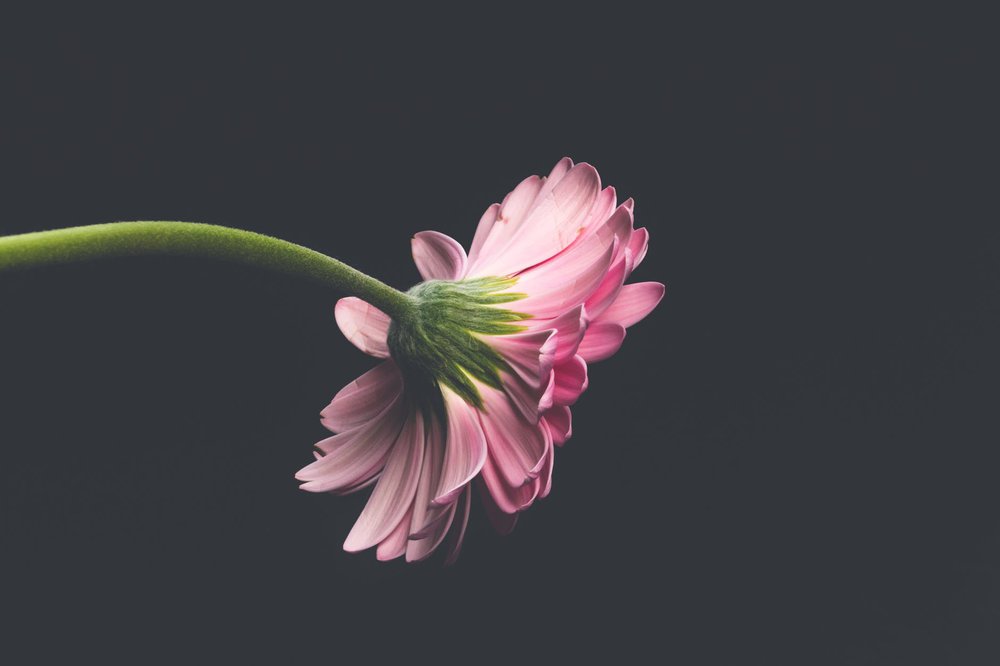
The name “Flower” is derived from Middle English flour, which initially referred to ground grain and plant reproductive structures until separating in the 17th century. It is derived from the Latin name of Flora, the Italian goddess of flowers. The early English term for the flower was bloom; however, it today mainly refers to fruit tree blossoms.
Many flowers have important symbolic meanings in Western culture. The practise of assigning meanings to flowers is known as floriography. Some of the more common examples include:000
- Red roses are given as a symbol of love, beauty, and passion.
- Poppies are a symbol of consolation in the time of death. In the United Kingdom, New Zealand, Australia and Canada, red poppies are worn to commemorate soldiers who have died in times of war.
- Irises/Lily are used in burials as a symbol referring to “resurrection/life”. It is also associated with stars (sun) and its petals 0blooming/shining.
- Daisies are a symbol of innocence.
Flowers have long been a favoured topic of visual artists due to their diverse and vivid look. Some of the most famous flower paintings are by well-known painters, such as Van Gogh’s sunflower series or Monet’s water lilies. Flowers are dried, freeze-dried, and pressed to make permanent, three-dimensional flower art.
Flowers in the art are also symbolic of female genitalia, as seen in the works of Georgia O’Keeffe, Imogen Cunningham, Veronica Ruiz de Velasco, and Judy Chicago, as well as in Asian and Western classical art. Many cultures throughout the world strongly link flowers with femininity.
Flowers in arts, a timeless inspiration
Flowers have become one of the most common themes in arts worldwide and have inspired several generations of artists. It is pretty challenging to explain why some artists made flowers their central theme. Why are humans attracted so much by it? Some experts believe that individuals prefer flowers because they signify the presence of fruit. Others, such as scientist David Deutsch, believe that blooms have an objective beauty that draws people in with their harmonizing hues, smooth curves, and symmetrical patterns. People have long endowed flowers with personal, cultural, and religious meaning, whether motivated by nourishment, beauty, or something else.

Artists have captured the complex significance of flowers over the years, charting the evolving meanings of roses, irises, tulips, carnations, and other flowers. Artists have also been drawn to them because of their evocative properties. A single flower might signify reproduction or decay, purity or promiscuity, love or hardship—or nothing more than a mound of petals, depending on the circumstances.
Classical art: Flowers as allegories
In classical art, flowers were often used for a purpose, although the way the artist would paint them could almost be perceived as “just a detail”. Nevertheless, we should never underestimate the power of flowers in the arts. Generally, the author never uses them randomly. There is often a true intention in its usage, and most of the time, the artist tries to express a sentiment relative to the subject of the art piece.
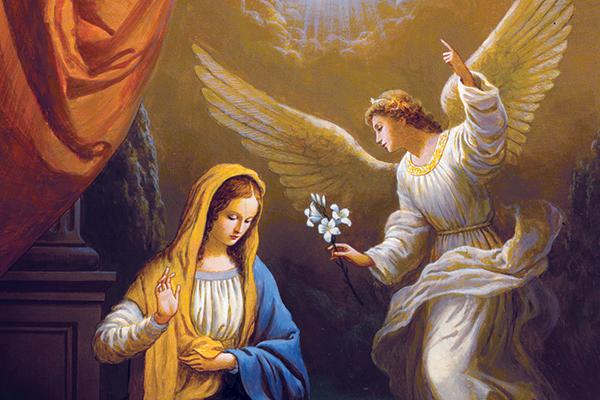
In Christian art, one of the most iconic subjects is the Annunciation. It depicts the moment the angel Gabriel informs the Virgin Mary that she will bear God’s son. Looking closely, you will see that these sceneries almost always include white lilies. These blossoms, also known as Madonna lilies, symbolize the Virgin’s innocence and purity, with their golden anthers representing God’s divine light. Their use signalled a significant shift in the flower’s iconography, which had previously been connected with the fertility and sexuality of the Greek goddess Hera.
Another interesting usage of flowers is, for example, the “Madonna and Child” with a crimson carnation, symbolizing the Virgin’s love for Christ and foreshadowing his martyrdom. Red roses also represented Christ’s sacrifice, each of its five petals signifying one of Christ’s crucifixion wounds. While these crimson blossoms represented mortality in Christian art, they also represented earthly love and devotion in wedding photos from the same era.
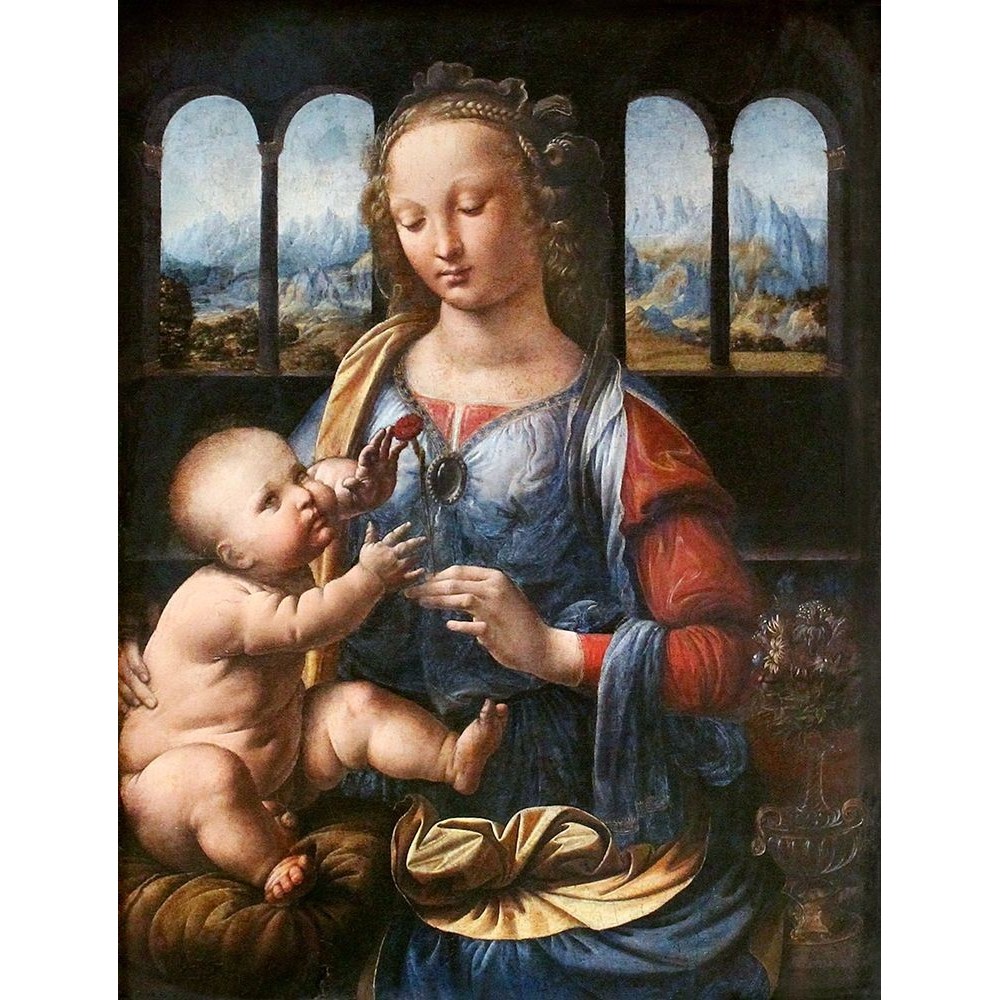
The Victorian era: Flowers against censorship!
The Victorian era in British history was the reign of Queen Victoria, which lasted from 20 June 1837 to her death on 22 January 1901. The age followed the Georgian period and preceded the Edwardian period, and its later half overlapped with the first half of Continental Europe’s Belle Époque era.
The nonconformist churches, such as the Methodists and the Evangelical side of the established Church of England, spearheaded a strong religious campaign for better moral standards. Ideologically, the Victorian era saw a return to romanticism and even mysticism in religion, social ideals, and the arts, as opposed to the rationality that marked the Georgian century. Victorian principles arose in all social groups and permeated all aspects of Victorian life. Victorian morality ingrained the period’s ideals, which may be classified as religion, ethics, Evangelicalism, industrial work ethic, and personal growth. Contemporary plays and all literature, even ancient masterpieces like Shakespeare, were “bowdlerized” or scrubbed of anything deemed improper for minors.

Artists, from painters to sculptors and writers, tried to escape the heavy morality of these times by utilizing flowers as a reflection of their thoughts. This means that instead of showcasing a woman’s beauty, warmth and sensuality, artists would display those emotions through the presence of flowers. It is allegoric, like in classical painting but with a solid subversive approach. In the above illustration, we can see a typical scene of the British middle class, and in the centre, we observe an exquisite woman holding a beautiful flower bouquet. The flowers are delicate, feminine and sensual. The daylight arousing the buds reveals all the sensuality of this composition. It is probably the symbol of that woman’s sensuality that the author would never be allowed to showcase directly. There is something relative to the woman’s personality that is represented here. Therefore the flowers are not just an insignificant detail. On the contrary, they express the intention of the author to display a choice.
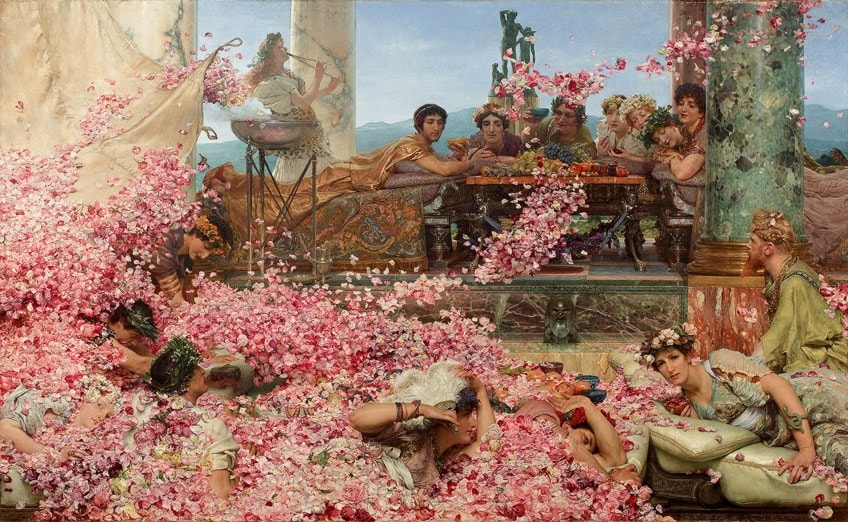
This well-known Victorian art depicts the feasting of the young Roman Emperor Elagabalus. It portrays a Roman supper drowned by drifts of pink rose petals falling from a false ceiling above. Elagabalus, a young Roman emperor, dressed in a golden silk gown and tiara, watches the play from a stage behind them, along with other garlanded visitors. Flowers play a significant role in this painting as it suggests the erotism of this scene. Roman feasts were known to be very erotic, and by Victorian times it was not something we could portray. The author utilized the lavish richness of roses to make you understand the tension in this scene.
The 19th Century: Society reconnecting with nature
With the arrival of the 19th century and its romanticism trend, men felt strongly connected with nature and sought this connection by all means. In the nineteenth century, “romantic” meant emotional, emphasizing poetry and the expression of human feelings. Romantic writings are filled with emotions and sentiments. Thus, so many things are labelled unrealistic that it’s impossible to recognize the connections between Victor Hugo‘s novels, Eugène Delacroix‘s paintings, and Ludwig Von Beethoven‘s music.
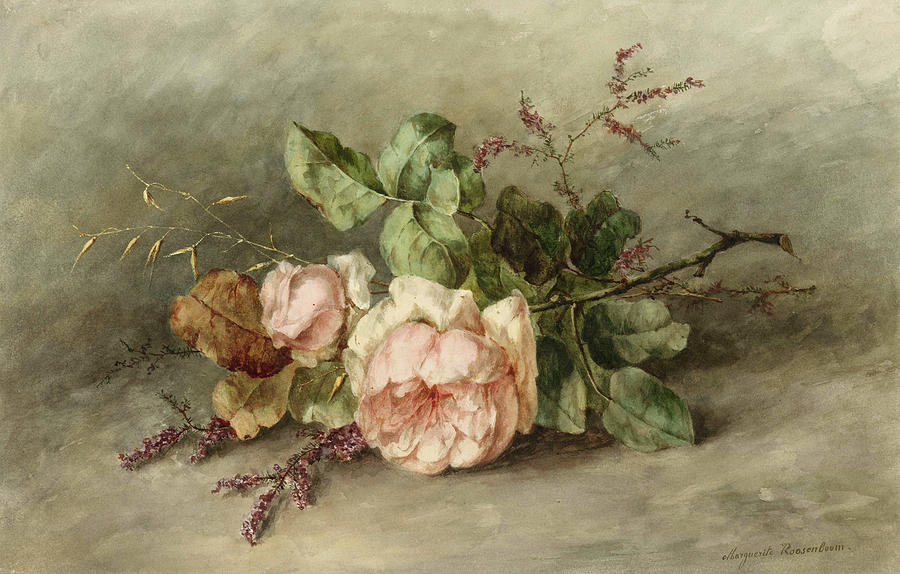
This new sentimentalism has created a new special connection between humanity and nature. To reconnect to one’s inner nature, we need to connect to the main matrix: mother nature. Artists would explore nature in different manners; we would be contemplative, facing the simple beauty of nature. Fron an outstanding landscape to a flower lying down on a table, romanticism integrates natural elements into all our surroundings. Flowers became the new models for painters and sculptors. They would succeed in expressing many feelings, often nostalgia.
The 20th century: Flowers blooming out of the frame!
Flowers have been one of the most popular topics for painters throughout history. Flowers’ colourful blossoms have always inspired painters, with many devoting their lives to producing still-life paintings of varied botanical marvels. Flower art has a long and illustrious history, ranging from 17th-century Dutch still-life paintings to Japanese woodblock prints. Whether painting roses, irises, or peonies in a vase or directly from nature, each artist adds their distinct flair to the completed piece. In fact, by analyzing flower paintings across time, one may follow the evolution of art history. The 20th century is for sure a beautiful path for flowers in art. They would be treated by their design, colours, context, etc. Flowers have bloomed in arts across the 20th century from very descriptive to more abstract, with my preferred period during the first decade.
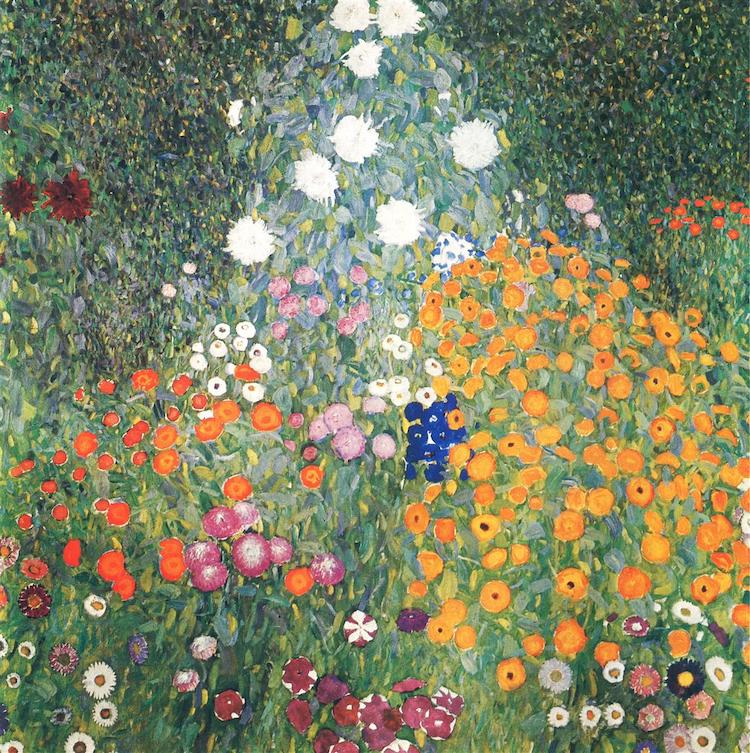

In this early part of the 20th century, flowers are subjects that express the artist’s feelings. It also sets a kind of poetry that catches anyone’s attention. Suppose you get the chance to visit the New York Metropolitan Museum and admire Claude Monet‘s Water Lillies. In that case, your eye will immediately be seduced by the sheer elegance and sensuality of the flowers. No human characters are needed as the flowers fulfil the job, like ballerinas floating over the water. All art critics agree that Claude Monet’s work around water lilies is his best artwork. It demonstrates the artist’s skills in Plein-air painting, his feeling for colour and his appreciation of light. Monet’s work on water lilies is at the crossroads of different styles, from Impressionism, expressionism and even abstraction. Flowers were magnified with this eternal elegance.
L’Art Nouveau: Inspired by nature
The new art movement had its roots in Britain, in the floral designs of William Morris and the Arts and Crafts movement founded by the pupils of Morris. One primary objective of Art Nouveau was to break down the traditional distinction between fine arts (especially painting and sculpture) and applied arts. At the end of the 19th century and covering a period until the beginning of the first world war, Art Nouveau appeared in architecture, fine arts, interior design and other fields. It was widely used in interior design, graphic arts, furniture, glass art, textiles, ceramics, jewellery and metal work.
Natural shapes, such as the flowing curves of plants and flowers, were frequently used as inspiration. A sense of vitality and movement, often conveyed by asymmetry or whiplash lines, was another feature of Art Nouveau, as was the use of new materials, notably iron, glass, ceramics, and later concrete, to produce unconventional forms and greater open spaces.
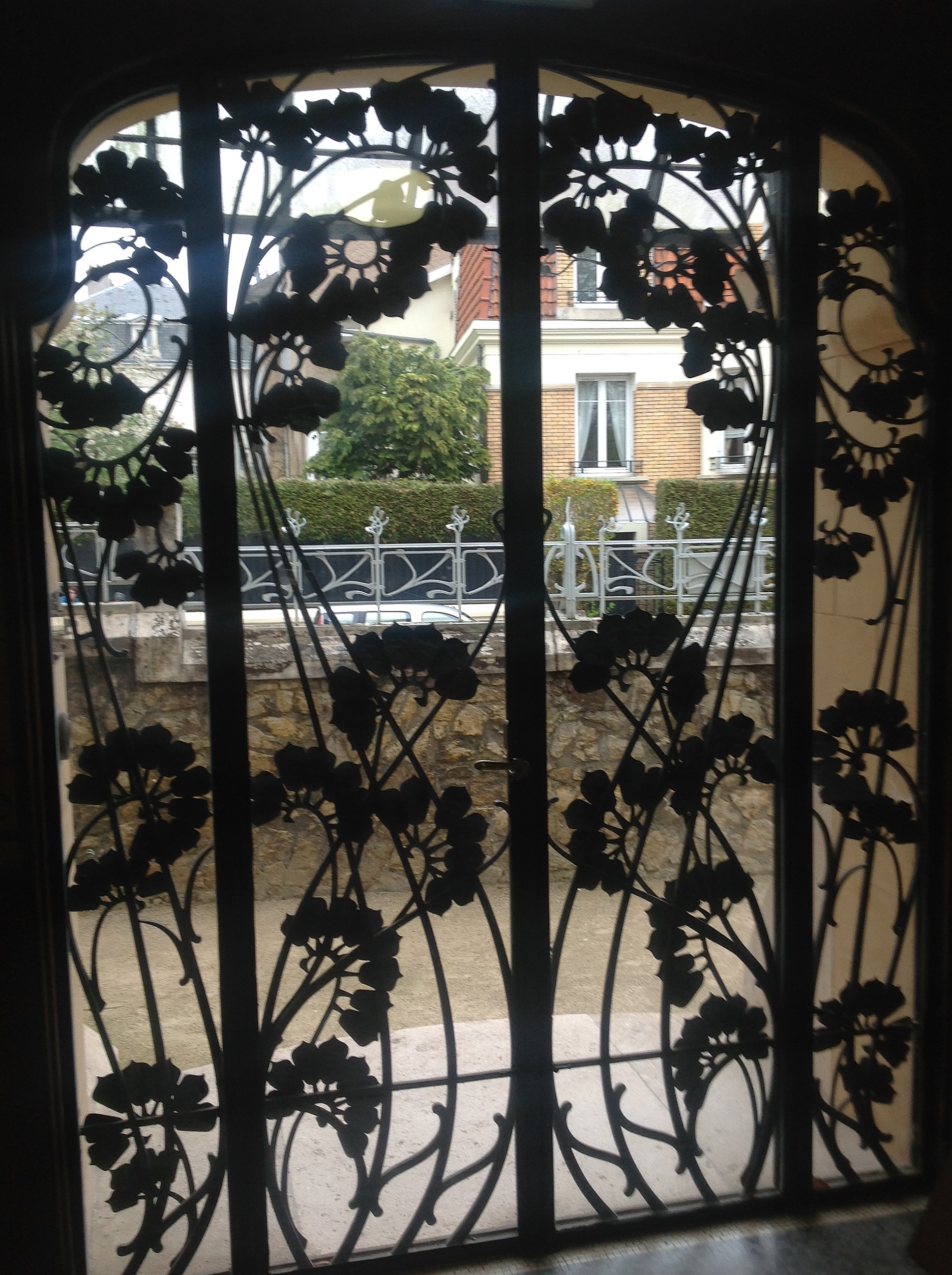
Today’s world needs more flowers.
Numerous artists have photographed, sculpted, sketched, and painted flowers. As a result, it may appear like there is nothing fresh to say or do occasionally. However, the outstanding modern artists below show that this couldn’t be further from the truth. Working in various mediums, each of these artists has harnessed flowers’ aesthetic and philosophical power in novel and surprising ways. Here are a couple of my favourite flora artwork shapes today’s art scene.
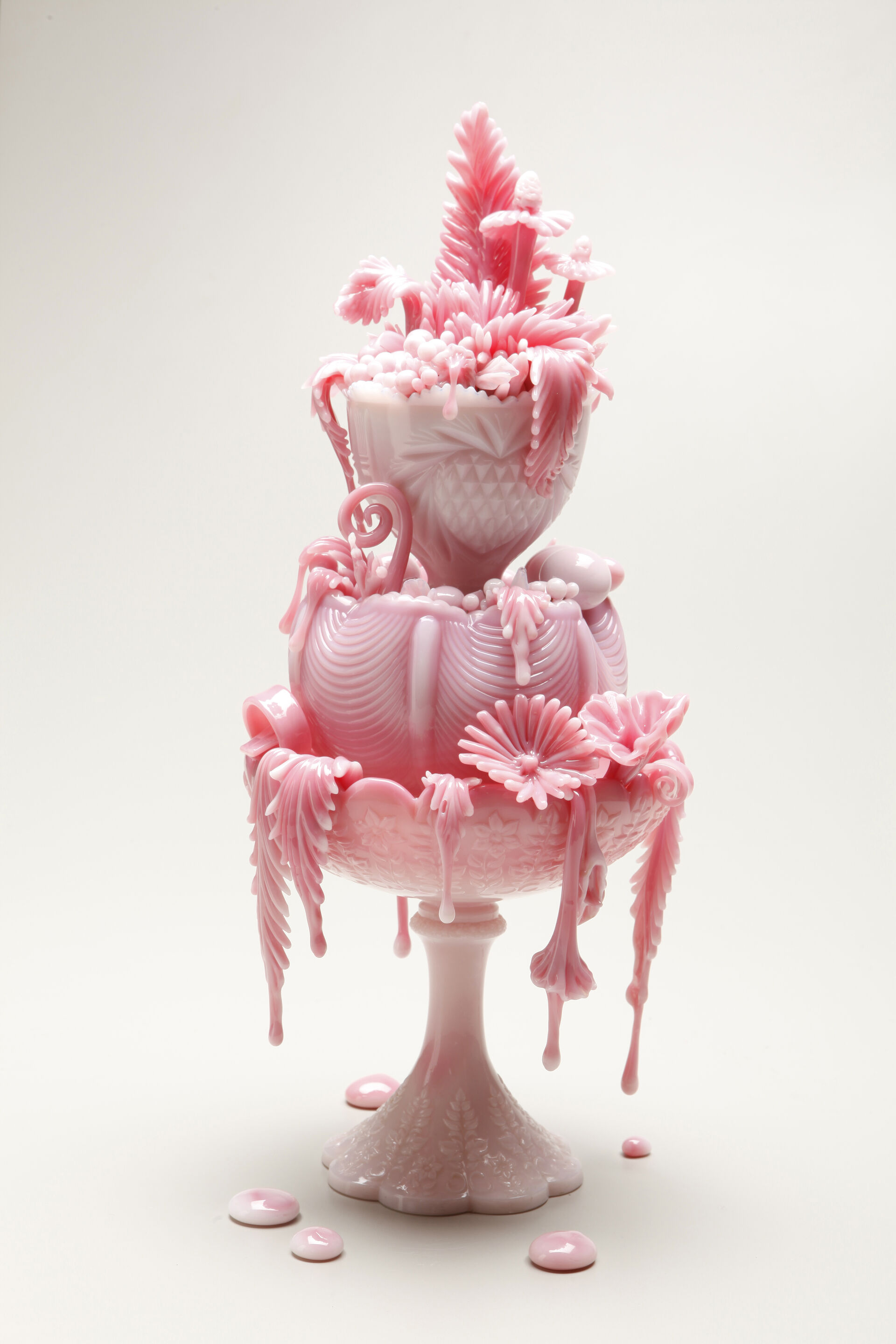
Amber Cowan is a fantastic artist. She reconnects with our past memories by bringing classical designs to life in a very modern fashion. She utilizes recycling 20th-century glass as one of the primary materials for her artwork. There is a strong emotion brought by the floral ornaments in the above piece, almost taking us back to the Belle-Epoque. I like these nostalgic pieces that take us back in time and put a smile on our faces. The artist often uses flowers to surround the main characters of her artwork. These elements bring a beautiful narrative of romanticism, femininity and elegance. Amber Cowen works and lives in Philadelphia – USA.
Helice Wen‘s paintings of stunning female figures surrounded by vibrant blooms probe daily concepts of intimacy, fragility, and sensibility. Flowers can also bring a lavish, exuberant highlight to paintings. Following the strong heritage of great painters like Paul Gauguin or Le Douanier Rousseau, I appreciate Helice Wen’s artwork. Born in Shenzhen-China in 1985, the artist lives in San Francisco. The Chinese American artist, whose canvases are often soaked in colour, graduated from San Francisco’s Academy of Art University and began her career as a children’s book illustrator before shifting her concentration to her acceptable art practice.

Floral art can be taken to extremes, blending our human nature with nature itself. Cecilia Paredes, a Peruvian artist, makes chameleonic photo performances by slipping into backdrops with extravagant flower designs. Paredes dresses in body paint and custom-made outfits to blend in with her surroundings, making it impossible for the observer to tell where the wall ends and where the artist’s figure begins. Her art is intended to be an intimate discussion with nature and an opportunity to investigate the human body as a manifestation of the natural world. She is referring to the constant presence of flowers throughout her work.
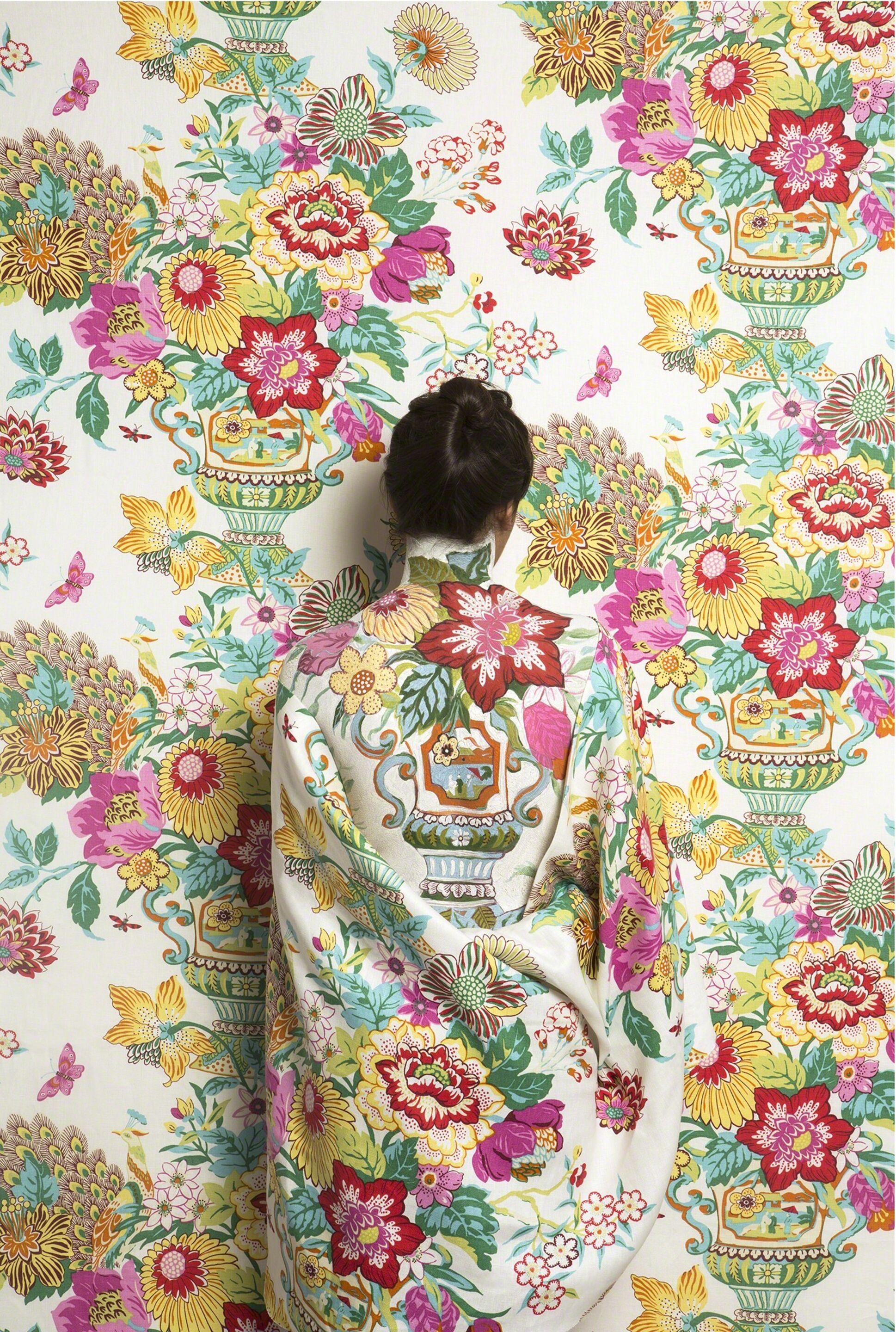

Following on the idea that flowers bring freedom of speech and a certain exotism into art, I appreciate the work of Hélène Garcia-Duthilleul. She creates with rare talent paintings and illustrations under Happy Garden Design. Her art is an actual window open to an enchanted, poetic and ultra-feminine world. I rarely see such a beautiful vision of women and nature with much positivism, generosity and originality. She has something of Frida Kahlo, Modigliani or even the exoticism of a Gaugin in her work.
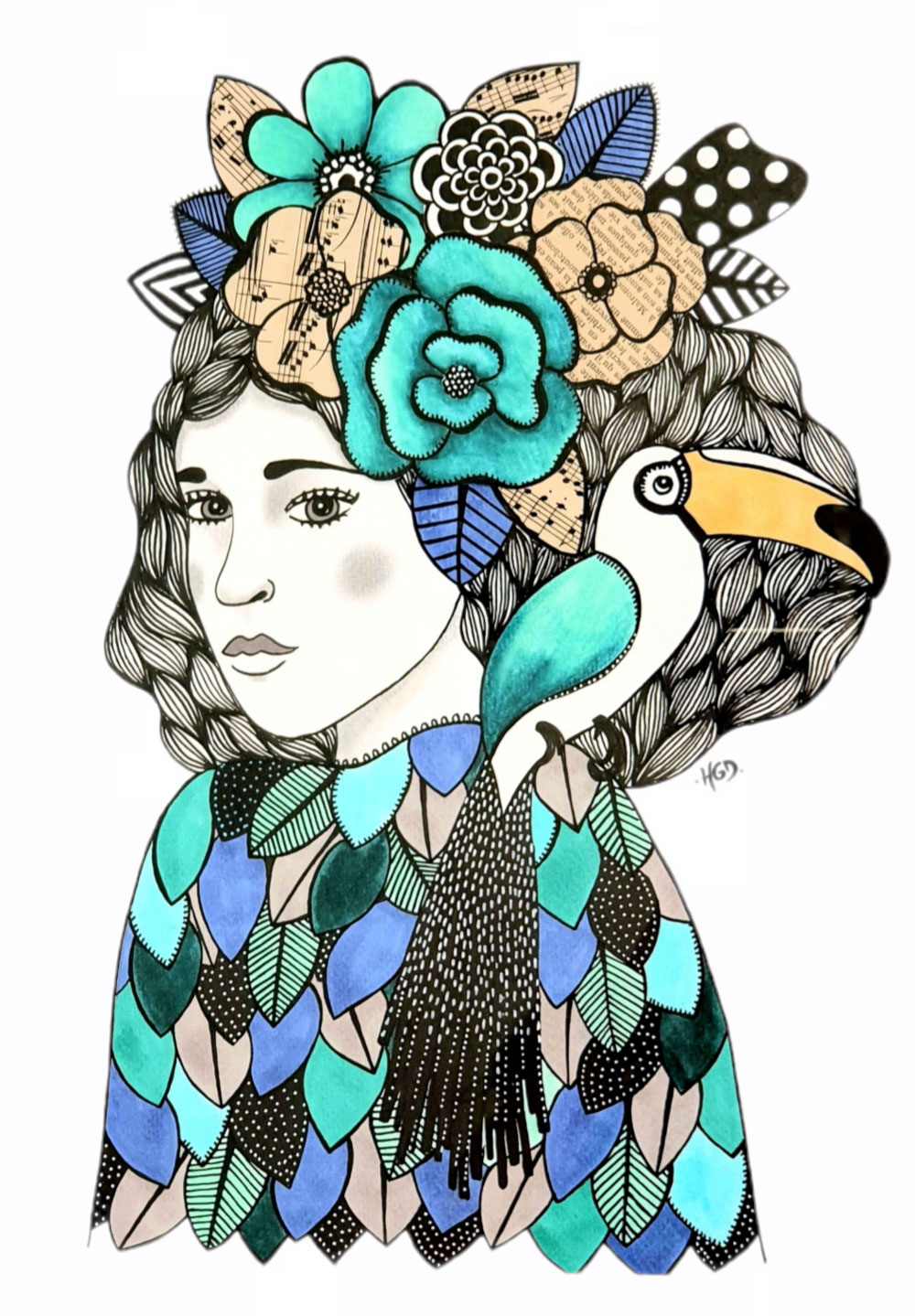
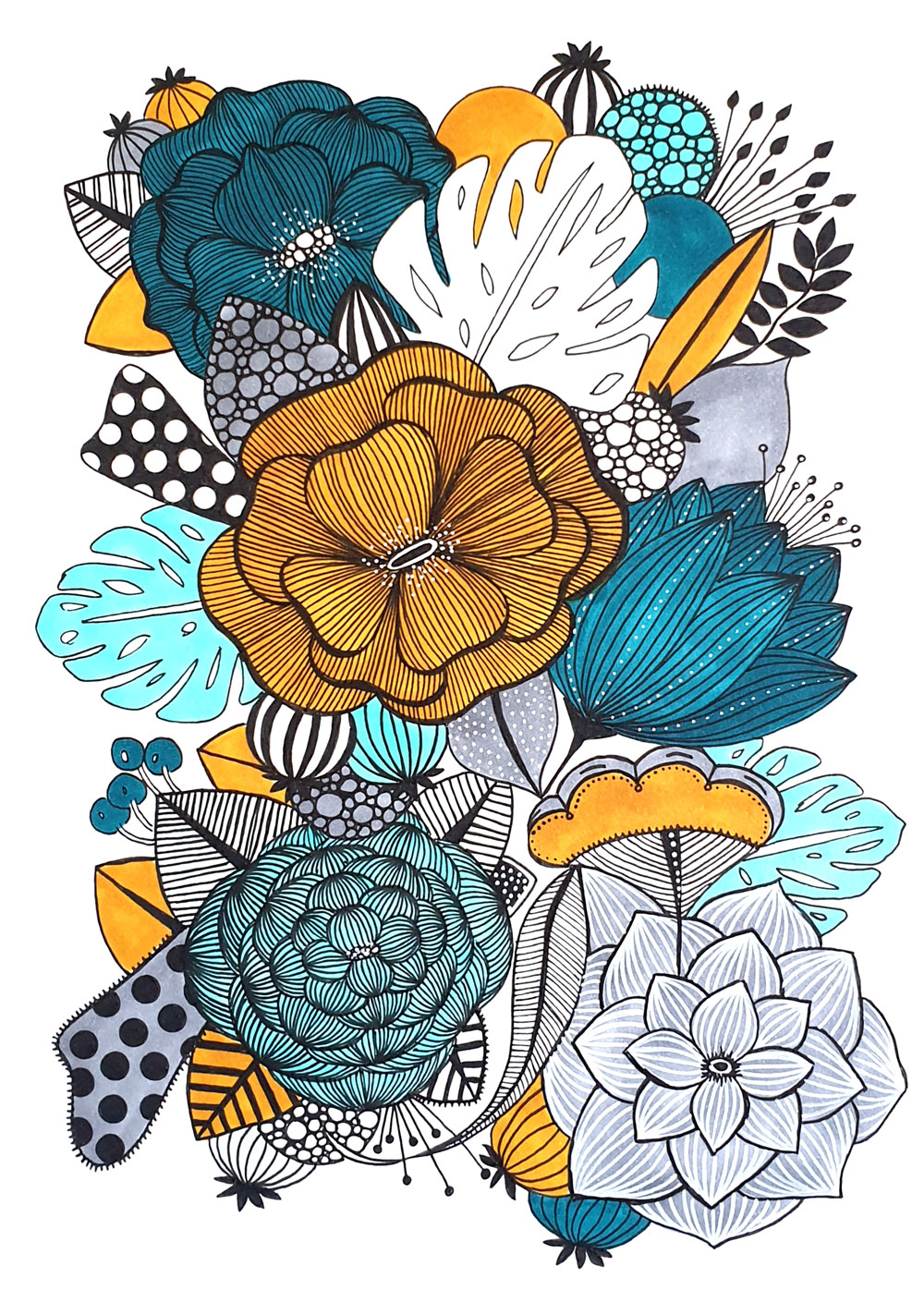
Hélène Garcia-Duthilleul is a one-of-a-kind artist with beautiful feelings and transcribes women’s magical and cheerful images. She paints a colourful, optimistic, and warm vision of life through a surreal nature. Happy Garden Design offers us a sunny garden, lush even, where women freely express themselves without any restraint. It represents a poetic vision of life we would love to be part of.
Last but not least, here is one of my favourite artists where technicity, botanical details and beauty of colours blend for an outstanding result. Please meet Se Jong Cho. Born in Seoul – South Korea, in 1978, she lives now in Baltimore in the USA. Her approach to art has a scientific accuracy and allows her to free herself from any academic established rules.
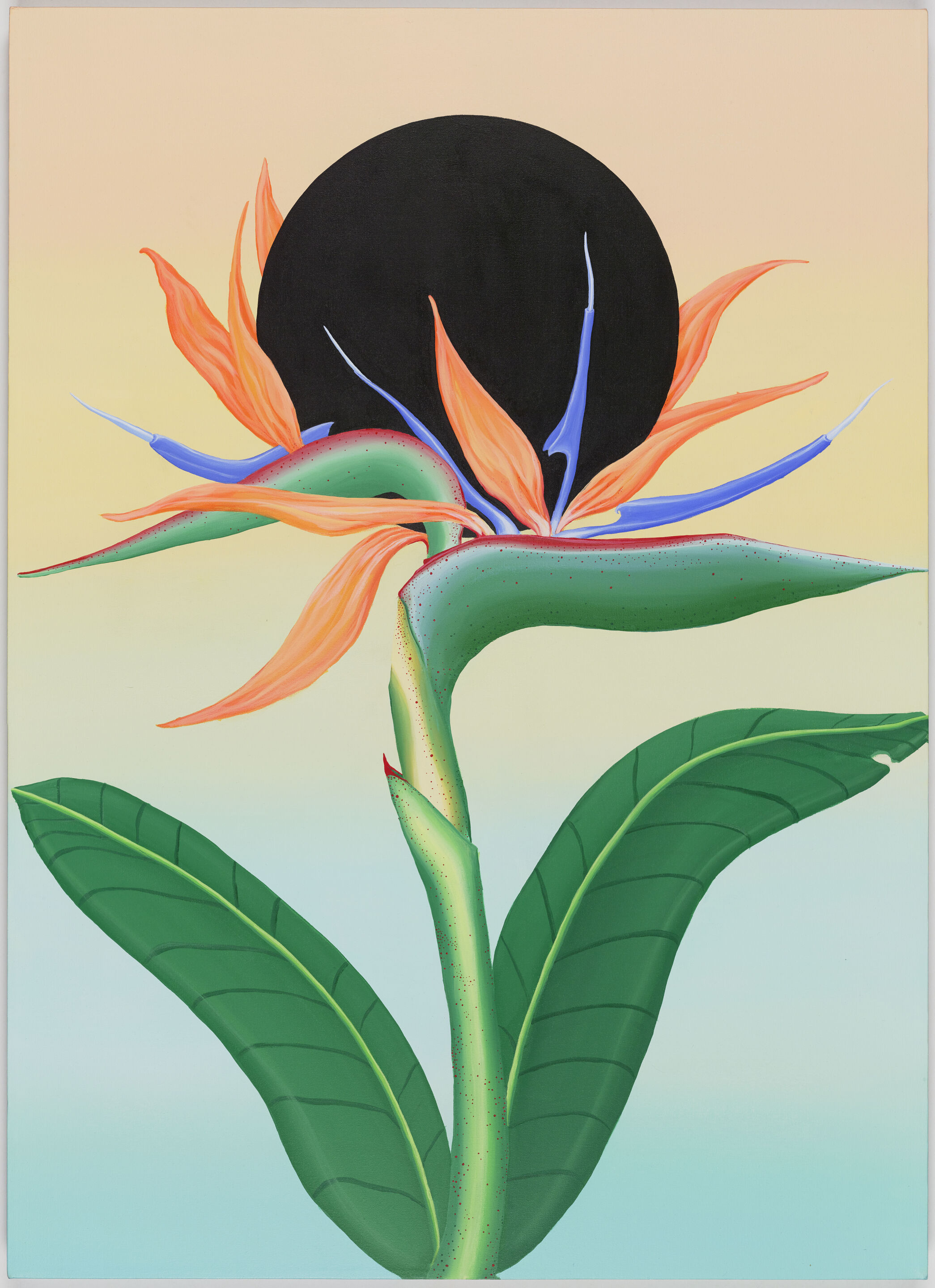
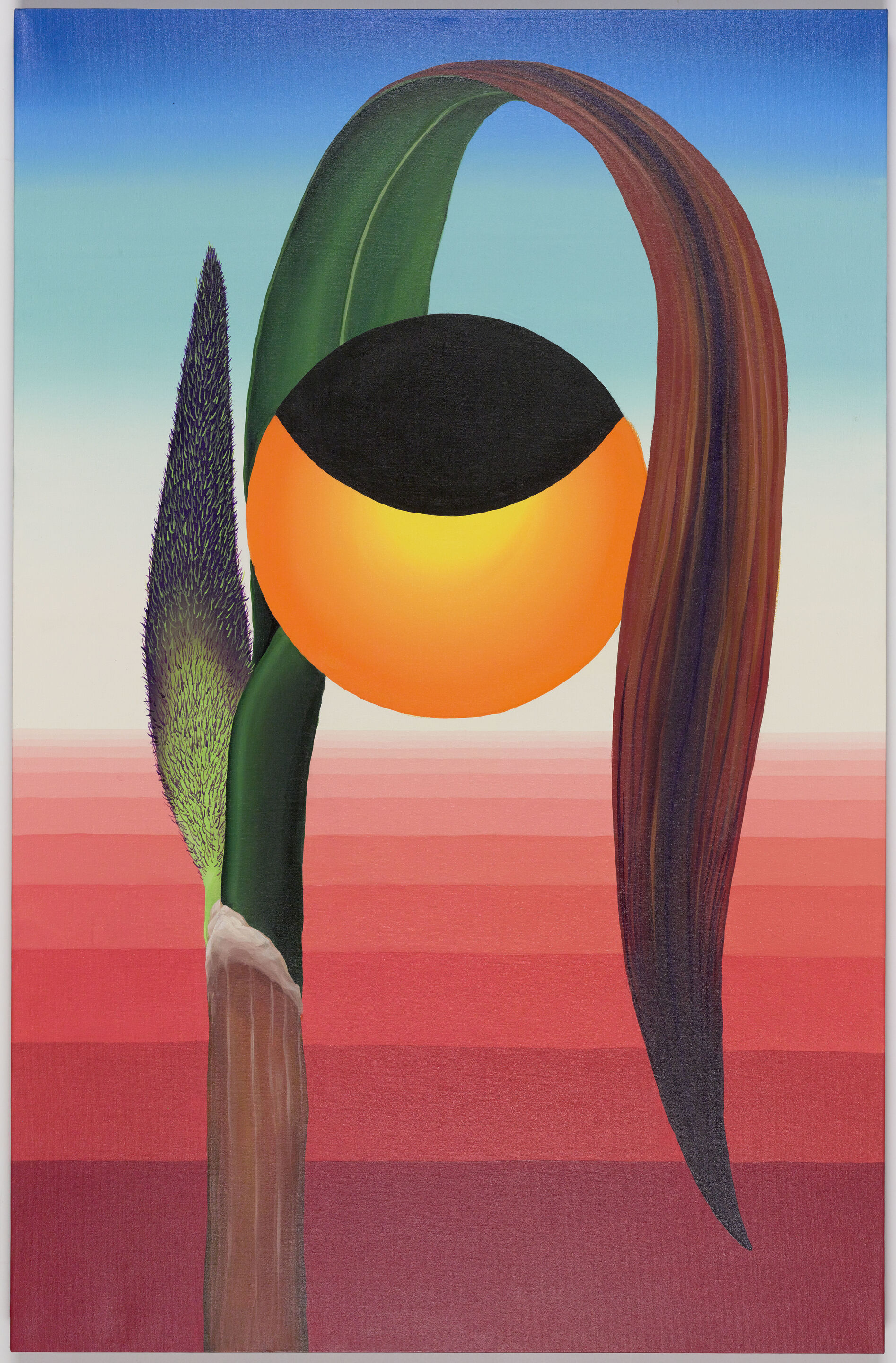
There is something almost botanical in Se Jong Cho. The way she displays the flowers on the canvas reminds me of the fantastic classification work done by german botanists at the beginning of the 19th century, where each detail counts. Beyond the obsession for more information, there is also tender poetry emanating from Se Jong Cho’s artwork. The softness of colours and the round lines take us on a never-ending journey.
In conclusion, flowers have always inspired great artists, helping them to express emotions and sometimes even going across censorship. Flowers are true gems in nature’s great treasure and will always be present in our lives. Henri Matisse used to say: “There are always flowers for those who want to see them“. As long artists observe their surroundings, there will always be a flower to paint like small miracles that life offers.
José Amorim
Information sourced by the author for luxuryactivist.com. All content is copyrighted with no reproduction rights available. Images are for illustration purposes only.
